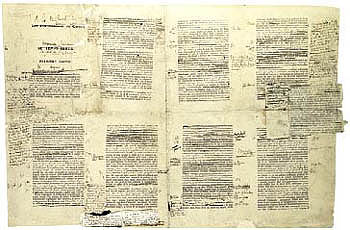“Tell all the Truth but tell it slant–
Success in Circuit lies
Too bright for our infirm Delight
The Truth’s superb surprise
As Lightning to the Children eased
With explanation kind
The Truth must dazzle gradually
Or every man be blind–” Emily Dickinson
Our first experience with rhyme was probably with nursery rhymes—simple perfect word matches—cat and hat, hog and jog, Horner and corner. But you can work with rhyme in subtler ways. One of my favorite approaches is to “tell it slant,” as Emily Dickinson was so fond of doing.
Slant rhymes, also called near rhymes are rhymes created using words with similar but not identical sounds. Words like ground/down, play/stayed and even more tenuous matches like Dickinson’s delight/surprise and eased/gradually. In some near rhymes the vowels are similar; in some the consonants match.
Why do I like to tell it slant? I love it for its rhythmic surprises. It can help you break away from the singsong, drumbeat that’s easy to fall into with perfect rhyme. But best of all, from a writer’s standpoint, it makes this whole business of writing in rhyme easier.
It’s hard to tell a nuanced story in perfect rhyme—with near rhyme your word choices open up dramatically. It makes it a bit easier to do as Dickinson advices—to tell the truth but tell it slant. It can “ease” the telling–and the receiving—both literally and figuratively.
Like Dickinson, I like to mix both near and perfect rhyme. Here are the first few stanzas of my very first book, “The Quiet Way Home.”
“Let’s go the quiet way home.
Not by the dog who growls at the gate
But the way where the kittens play
Hush. Can you hear it.
Skittle. Skattle. Bat and claw
Kitten paw.
Let’s go the quiet way home
Not by the lawn and the roar as John mows
But the way where Mr. Kay’s garden grows
Hush. Can you hear it?
Chip, chop, dig-a-row.
Garden hoe.
There are a couple techniques embedded in these lines. For one thing, if you’re going to use slant rhyme establish early that this is what you’re going to do. With my first stanza, I’ve signaled immediately that I’m not going with perfect rhyme (gate/play). But as you can see from my second verse, I am promising a similar rhythm and pattern to each stanza. And perfect rhyme at times (mows/grows).
Notice also that I use internal rhyme—that is rhyme within the line itself not just at the end, such as “growls” and “gate,” “roar” and “mows,” “way” and “Kay.” Internal rhyme like that is often slant rhyme and poets use it all the time.
(By the way “hush” is a magic word. I’ve never had a class– from kindergarteners to 6th graders–not hush at that moment and listen. I suspect it’s half the magic of “Good Night Moon.”)
Also, with the important moment—when I identify the object making the noise—I consistently use perfect rhyme (claw/paw, row/hoe). It creates a punchy contrast to the near rhyme. Just as Dickinson uses her one moment of perfect rhyme, kind/blind, to such powerful effect in her poem.
One challenge of slant rhyme is it can get away from you. You don’t have the control of perfect rhythm and rhyme. In my book, “Just a Minute” I go so slant at times that I think I come perilously close to going completely off the track.
It’s a tall tale about a boy whose minute of waiting for his mother gradually seems to balloon into eternity. Here’s how it starts:
“Now, don’t you move,”
said Johnny MacGuffin’s mother.
“Stay right here while I shop.
Auntie Mabel will watch.
I’ll be just a minute.”
And she sailed away,
Past the purses and plates,
Up the up escalator
In Bindle’s Department Store.
“But you’ll take forever!” Johnny cried.
“When you get back I’ll be fossilized!”
But it was too late.
He was stuck in the basement of Bindle’s again.
While Johnny’s mom is away he imagines that Christmas comes and goes, a year passes, then more. He grows up and grows old and Bindle’s crumbles to dust. Finally:
The sun shifted its course
And the seas rose and fell
And rose again…
…[then] the tides came in
and the sun burned to a cinder of vermilion…
All this by the time his mother returns. It’s a rather careening path of rhythm and rhyme, but I think it works for a tall tale of time spinning out of control.
Slant rhyme isn’t “cheating” and it can be a powerful tool for you for telling stories in rhyme. But when to use it depends, as it always does, on what’s right for your story. Don’t use it just to be lazy.
As in the Dickinson poem, with or without perfect rhyme, your goal as an author is to “tell all the truth.” To tell a story as honestly as you can. One that is honest about its message and honest about its techniques, and sometimes the perfect choice will be to “tell it slant.”































